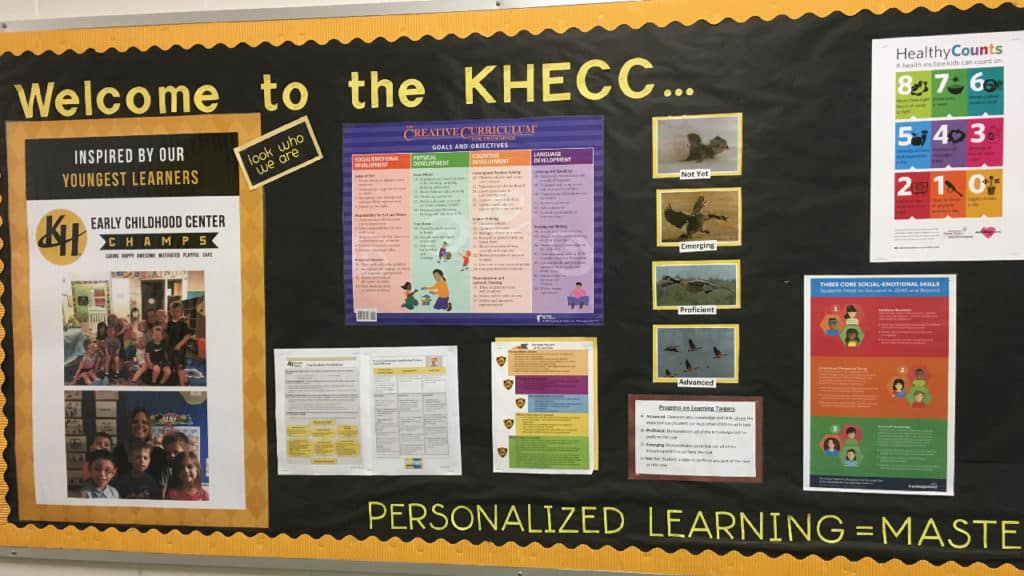Illustrating Proficiency Grading Levels: 1234 Versus ABCDF
CompetencyWorks Blog
This post originally appeared at KnowledgeWorks on April 30, 2019.
When you walk into the Early Childhood Center of Kenowa Hills Public School District and talk with Principal Dan Brant, is it immediately clear that engaging families in their journey to personal mastery learning is a top priority. New language and concepts that are different from more traditional approaches to teaching and grading require being thoughtful about how to build clarity in communications. Just like many schools who are working to shift to student-centered learning or personalized, competency-based learning, helping parents and guardians understand and engage with their child’s learning is critical.
Principal Brant uses simple images to help illustrate the purpose and importance of proficiency-based grading for people who may only be familiar with thinking about grading in terms of percentages, points or As, Bs and Cs.
These impactful visuals are one of the first things visitors see when walking through the school’s doors and helps easily explain their proficiency grading levels of 1, 2, 3 and 4:

 1: Not Yet: Students unable to perform any part of the task at this time. Like a bird hatching, you’re just getting started and need more help to get ready to fly.
1: Not Yet: Students unable to perform any part of the task at this time. Like a bird hatching, you’re just getting started and need more help to get ready to fly.
 2: Emerging: The student demonstrates some, but not all of the knowledge/skill to perform the task. You’re spreading your wings and trying to fly on your own.
2: Emerging: The student demonstrates some, but not all of the knowledge/skill to perform the task. You’re spreading your wings and trying to fly on your own.
 3: Proficient: The student demonstrates all of the knowledge/skill to perform the task. You’ve done it! You’re flying on your own with ease.
3: Proficient: The student demonstrates all of the knowledge/skill to perform the task. You’ve done it! You’re flying on your own with ease.
 4: Advanced: The student demonstrates knowledge and skill above the expected task and can lead other children with task. You can help lead your flock and show others the way).
4: Advanced: The student demonstrates knowledge and skill above the expected task and can lead other children with task. You can help lead your flock and show others the way).
See also:
- Starting with the Kindergartners in McComb
- How Data Notebooks Can Support Goal-Setting and Student Agency in Elementary School
- Missteps in Implementing Competency Education: Introducing Grading Too Early
 Emily Smith is Director of Network Advancement at KnowledgeWorks. She focuses on developing strategies and tools to help school districts and state education agencies connect and learn from each other as they work to grow personalized learning for their students. Previously she was responsible for overseeing marketing communications and content development strategies for the organization and helping former subsidiary StriveTogether engage its national network.
Emily Smith is Director of Network Advancement at KnowledgeWorks. She focuses on developing strategies and tools to help school districts and state education agencies connect and learn from each other as they work to grow personalized learning for their students. Previously she was responsible for overseeing marketing communications and content development strategies for the organization and helping former subsidiary StriveTogether engage its national network.